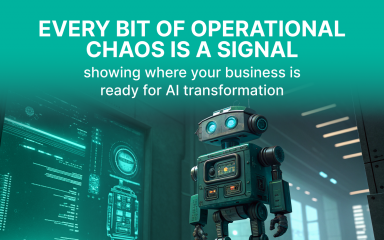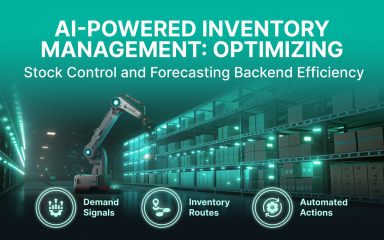B2B ecommerce sector is growing faster than B2C and requires more attention. This post suggests ideas and best practices how to do business with B2B ecommerce partners.
By 2020, Forrester Research expects the U.S. B2B ecommerce market to be worth $1.1 trillion, or twice the size of the U.S. B2C market.
So be ready to refer to B2B ecommerce platform today. And here’s why:
Why Build Custom B2B E-Commerce Portal for B2B Customers?
The quote above by Patrick Wolf makes us think that B2B ecommerce segment brings more money to ecommerce companies, which eventually leads to higher investment into the B2B segment. Otherwise, higher profits are simply not possible.
This means ecommerce businesses need to treat B2B customers in a special way, providing them with extra functionality and personalization when compared to B2C. For this purpose, ecommerce businesses should work closely with their B2B partners. They should intricately study their daily operations and processes, and build custom portals for every B2B customer, which meet business processes of B2B partners.
It might sound difficult and time-consuming. In reality, it’s even more complicated than you can imagine at the very beginning. Most companies, who made the first steps and built custom portals for their B2B customers, reveal that the average time for building a custom portal for every separate B2B customer takes between 6 months to 2 years.
It’s certainly not because of technology issues or due to a lack of resources. It’s owing of customization. You need to find out what features and processes are required. Often you, and your B2B partner, may find out that features which you thought would be useful, appeared to confer little value or perform the wrong results. You should be ready for ongoing and lean experiments, before you find the right combination of how you and your B2B customer will conduct online business together.
Anyway, keep going. As a result, you’ll be able to grow your business, and the business of your partner. Both sides of the arrangement will benefit.
Benefits for B2B E-Commerce Portal Customers
- They get more online attention;
- The system is customized to their business processes and demands (like for specific user roles, scheduled orders etc.);
- Customer intelligence system provides them with the promotions, which are unique only to their company;
- The custom portal helps you understand their business and suggest unique improvements;
- Their cooperation with your company is transparent.Benefits for B2B ecommerce provider:
- It helps understand your customer and their business needs;
- It’s not only about transactions, it’s also about partnership and cooperation;
- It reduces the risk of losing B2B customers;
- It helps you discover new ideas how to improve the portal from your customers.
What Features Should the B2B E-Commerce Portal Contain?
Personalization
Personalizations for the B2B ecommerce customer starts with custom design, both UX and UI. By UI I mean the “look and feel” – it should be similar to any software owned by your partner, with similar colors, signs, shapes and so on. This way you provide an intuitive experience for your partner, leading to much higher customer engagement.
Custom UX design is more complicated, but it’s critical in any ecommerce portal for B2B customers. The UX of such a portal should match the business processes of your partner. For example, the office manager orders the exact amount of products, the accounting manager pays the invoice and the logistics manager agrees on the date and on terms for delivery. The system should follow this process and properly react to a variety of actions by different users.
This example is really common for many companies, but some companies have very specific processes. So just keep that in mind.
Multiple users and roles
As described above, you need different users to perform different actions. Roles and permissions will differ too. For example, a logistics manager cannot place an order. What’s more, s/he cannot even see how many orders were placed, or how many invoices went unpaid.
This way you can make sure that the employees of your partner don’t get confused or overwhelmed with unnecessary info, and can focus on their business areas.
Bulk, repeat and scheduled ordering
Your partner might want to place and repeat the same orders on a monthly/weekly basis. This way you’ll make sure they don’t spend too much time clarifying which products they’ll need and which ones they will not.
Automatization is also possible. You and your customer agree on monthly/weekly recurring operations, and the system performs all the magic.
Integrations
In order to provide a seamless user experience for your partner, you’ll want to integrate your portal with their environment and apps. Here’s a short list of integrations, which your B2B partner will totally love:
- Integration with the accounting office.
Your partner definitely has various suppliers for different products and services. Don’t make accountants check for invoices from you. Simplify that! Try sending your invoices into their list of all invoices. They’ll really appreciate this.
- Bank integration / card billing.
For repeat orders, try charging bank account or credit card automatically.
- Partner Inventory integration.
Once the invoice is paid, and the product is on the way, make sure this product appears in the books of your partner.
- Owned Inventory integration.
Provide your partner with online info about your products in stock. It helps to avoid back ordering and delays in shipment.
- Logistics integration.
Once the products have left your warehouses, your B2B customers might want to see where the products are and when they’ll arrive.
Self-Service
The need to reorganize business processes could always happen. For instance, the roles could have changed, there’s a new employee who needs additional permissions, the business process has been altered and so on.
In this case, your partner will appreciate if you provide them with the ability to get manual updates without having to contact you. For this purpose, you should provide them with a self-service page.
Specific offers and promotions
Each of your B2B ecommerce partners should get highly targeted and specific promotions. This way you can ensure that your partner doesn’t get spammy advertisements, and every promo brings the greatest value to their business. This also involves personalization.
Analytics of B2B customer experience
This is not a direct feature for your customer, and it will not be used daily. This feature has a long term value and helps you understand how your customers behave and what they really need. This way you have the answer on how to improve the system, how to improve the interactions with the partner, and how to grow theirs and your business.
You could also use split-testing, questionnaires, feedback forms, heatmaps and more.
This list can be extended, but remember: each integration should meet the business processes and requirements of your partner. Don’t offer any integration unless you’re sure it will improve their daily business processes. On the flip side, learn their daily business routine to find out how you can improve it with integrations.
Want to Learn More?
I invite you to look for more examples of successful B2B E-Commerce portal. Do that regularly, because awards and winners are being updated frequently.
For now, here are 3 great lists:
- The Northern E-Commerce Awards 2016: The Winners by David Prior
- Winners of the 2016 Internet Retailer Excellence Awards
- Which B2B ecommerce sites are getting it right? Here’s 15 of the best… by Graham Charlton (not the award list, but full of awesome examples).
Inspiration and best examples in website design
Also, I advise that you check out the following websites:
- awwwards.com
- ecommerceawards.ie
- ecommerceawards.london
- bigchipawards.com
- ecommerce-award.ch (available only in Swiss)
- terrapinn.com/awards/seamless-awards
The 8 best articles about B2B ecommerce success
- B2B eCommerce: A Best Practice Checklist for Success by Mark Boyd
- 10 Best Practices for Better B2B Website Experience by Eduardo Esparza
- An Introduction to Personalisation in B2B eCommerce by Vanessa Meyer
- B2B Ecommerce Trends: 9 Experts Discuss the Big Shift that’s Coming to B2B by George Anderson
- What defines a great customer experience for B2B companies? by Nikki Gilliland
- B2B Customer Service Best Practices, From American Express (Amex) And Other Great Players by Micah Solomon
- How to Drive B-to-B Loyalty by Celebrating Customers by Drew Neisser
- Predicting The Future Of B2B E-Commerce by Louis Columbus
Conclusion
The number of success stories of personalized B2B E-Commerce portal is rising. Experts expect this trend to only continue. In a couple of years, ecommerce companies without such a portal might get lost behind.
Providing a personalized B2B customer experience is going to become one of the major trends for the B2B ecommerce domain in 2017 and 2018.
Such a portal cannot be built with a philosophy of “one size fits all”. Every portal should be highly personalized and customized to the business needs and processes of your B2B customers. Among the most common features of such a portal:
Among the most common features of such a portal:
- personalization;
- specific roles and permissions;
- self-service;
- specific types of payments and delivery terms;
- integrations with 3rd party apps;
- personalized promotions;
- wide range of analytical reports.
All this helps you provide an exceptional experience for your B2B customers.











